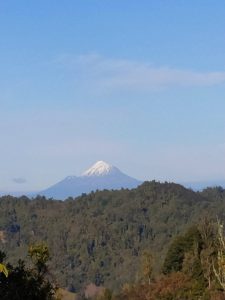Freshwater Monitoring
Given human health is now on the line in regions such as Hawkes Bay and Canterbury, good data on the state of our freshwater is life-critical, literally.
The data determine how well we’re meeting the National Policy Statement on Freshwater Management, the effects of mitigation initiatives, where $465M of tax payer money for major clean ups goes, inform regional resource management plans and determine future farming practices. So, if freshwater quality determines our economic, social and environmental well-being measuring it should be bullet-proof, shouldn’t it? Read on.
Monitoring Quantity
River flow and level monitoring are not extensive and often in place primarily to regulate water takes. There is no standard, rule or regulation for minimum flow sufficient to support in-stream life. Ministry of Environment (MfE) kicked off consultation and issued guidelines in 1998, these developed into a draft National Environmental Standard on Ecological Flows and Water Levels in 2008. And there it remains.
We are now in a perverse situation where everyone is talking about “swimmable water” in qualitative terms and we’ve rather taken our eyes off the equally important and integral issue of quantity.
We rely on Councils to determine minimum river flows, often in the complete absence of any scientific data. Indeed, in 2016 the Cawthron Institute published results of fifteen years of research suggesting that our current minimum flow levels are a fraction of what they should be to sustain healthy salmonid fisheries. And whilst the National Policy Statement on Freshwater Management obliges Councils to ensure no rivers are over-allocated, there is zero guidance on how to determine this.
Were minimum flows, sufficient to ensure a healthy aquatic environment, ever to be ratified and mandated this would drastically limit the amount of available consumptive water for irrigation and town use. Equally disturbing is it becoming fuel for an irrigation industry who promote dams as the solution to regulating minimum flows.
This will be the next battle after swimmable water.
Monitoring Quality
Our 1,500 river water quality monitoring sites are managed by Councils and NIWA the data assembled to give a national picture by Ministry for the Environment. Distributed across 425,000 kilometres of rivers there is not enough according to a 2014 NIWA report which identified a further 240 are required.
However, not all freshwater quality monitoring stations are created equal:
- They are not present on all rivers,
- They are not evenly distributed along the length of a river,
- All stations do not measure all attributes(e.g. N,P, sediment, e coli, periphyton, etc).
- 600 of the 1,500 sites are to monitor resource consent compliance
The upshot of the NIWA report was MfE committing $1M for additional monitoring sites. Compared to the $425M doled out by Crown Irrigation Investments Ltd this is chump change and a factor in why Councils struggle to optimise quality monitoring.
Councils decide independently what and where to measure– there are no standards or guidance. For instance Tasman District Council halved its monitoring stations to 29 two ago but increased the frequency and extent of monitored attributes.
Trade-offs are inevitable, some rivers are extensively monitored, some use attributes as proxies for others (e coli is measured as a proxy for nutrient loads) and some are not monitored at all. ECan only monitor popular swimming holes and nutrient data is absent. The last Canterbury-wide freshwater quality report available on their web site is 2011!
When Councils and farmers invest in riparian fencing and planting and dairy industry lobbyists trumpet that $1 billion has been spent on “environmental investment” you would expect to have a “before and after” measure of its effectiveness, over and beyond it looking pretty Alas, results are couched in emotive terms, with scant scientific data available.
NIWA’s National River Water Quality Network provides good long-term water quality data. Each river has an upstream and downstream, monitoring site so the impact of land use can be measured. However it only covers 35 of our 1,100 rivers.
So our measuring is patchy, at best it allows people to cherry –pick data to suit their agenda, at worst we see only a fraction of the real state of our lakes and rivers.
Good data is key to reclaiming Our Freshwater back.
